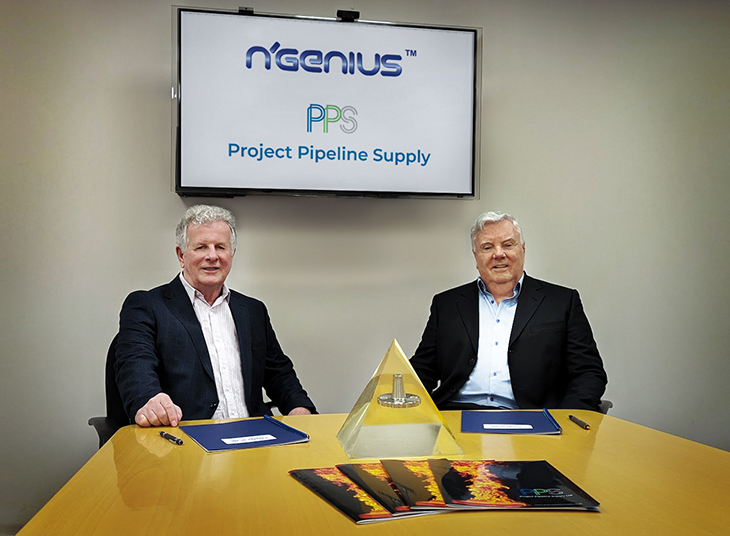The last couple of years brought a global pandemic, new tariffs, labor disruptions, and other social and geopolitical trends. In freight and logistics, the result is a world that feels bigger than before these events. What are the factors causing port congestion in 2022, and how can the industrial sector plan for and overcome such obstacles?
1. Port Strikes in Europe
Labor demonstrations are underway at ports in the United Kingdom. A similar port strike in Germany resulted in a three-month cessation of services before labor and management came to an accord.
Workers cite dangerous, high-stress conditions and compensation that no longer reflects reality, considering the effects of global inflation. The port workers union in Germany called their demonstration a success after management agreed to increase prices to address the rising cost of living.
2. Extreme Heat Closing European Waterways
In summer 2022, German port authorities were forced to close several waterways feeding commerce in the region and their ports, including those on the middle and upper Rhine River.
The reason was extreme heat waves and resulting low water levels. A representative of barge operator Contargo cited safety and said the company and others like it “... can no longer guarantee that all deadlines are met.” Environmentalists worry similar economic stoppages or severely reduced capacity will accompany similar extreme events in the future. These portions of the Rhine haven’t been closed in four years.
3. Waterways and Factories Closing in China
The Rhine isn’t the only region suffering from heat-related droughts, port closures and compromised capacity. Some of the most important factories in China fueling global trade, including some that supply solar panels, are closing due to droughts.
Crop fields, reservoirs and the country’s hydropower industry are all feeling the strain. Decision-makers are responding by either slowing or shutting down the factories and ports that rely on these raw materials or operational power sources. Because of this and other factors, the Chinese government reported the economic growth they expected in 2022’s first half was 50% less than expected — 2.5% compared to 5.5%.
4. American West Coast ILWU Negotiations
In May 2022, the International Longshore and Warehouse Union (ILWU) began negotiations to raise wages and improve conditions for 22,000 port workers. The talks affect Long Beach and Los Angeles in California, which handle 42% of container traffic from Asia.
The Biden administration has been observing the labor negotiations. If talks stall, the government may invoke the Taft-Hartley Act, which would add an 80-day cooldown to the already drawn-out negotiation process of the last few months.
5. East Coast Ports Get Backed up in the U.S.
Some of the reasons for port congestion can be traced to outside factors. For example, the worker shortage across trucking is another reason for the struggles at maritime facilities. Unreliable labor pipelines often create false expectations for companies operating in ports.
For example, during the worst of the post-pandemic disruptions in Los Angeles, there were 16 full containers at the port awaiting unloading for every available truck to put products on. That 16:1 ratio resulted in traffic getting routed to ports on the gulf and east coasts and a situation that at least one port representative called “a horror show.”
6. China’s Golden Week Causes Uptick Before Slack Season
The post-pandemic recovery period will not likely dampen Chinese citizens’ enthusiasm for Golden Week — a national holiday celebrated in early October. For importers, exporters, shippers and forwarders, it’s a given that Golden Week will cause delivery impacts, including delayed shipments, for those who aren’t prepared.
As far as ports are concerned, this holiday is expected to be the last explosion of activity before the slacker holiday season. It may make life even more hectic for port workers for a time, but it should herald calmer seas ahead.
Current Solutions for Port Congestion
What can logistics specialists and freight companies learn from these experiences? What solutions are at hand for this challenging time in port management? Here are several suggestions.
Lobbying for Better Infrastructure
Aging infrastructure is one of the biggest impediments to a healthy flow of goods through ports. Ships are always getting bigger, and the volume of freight processed at ports only increases.
Governments and major economic players have everything to gain from lobbying for and executing infrastructure development projects. The quality of a country’s ports is a major part of what makes it competitive globally.
Predicting Future Events
Pandemics are the most extreme external factor freight companies are likely to encounter. However, each day, there are other influences on supply and demand, including:
- Weather trends affecting freight throughput
- Seasonal and outlier changes in customer demand
- Geopolitical events and staff shortages
- Environmental trends impacting sourcing
- Shifts in pricing or factors influencing it
Today, logistics services and port managers can build their own information system tools or buy off-the-shelf solutions to study markets, product flow, material prices, routes and transit-time changes. This lets them react proactively to coming events and disruptions.
Paying Workers What They’re Worth
A frequently cited reason for port congestion and logistics slowdowns is the shortage of skilled labor. In reality, what’s scarce is decent, livable wages.
The contract negotiations and organized slowdowns underway at ports worldwide came about because wages no longer reflect the cost of living or the value employees bring to these organizations. Inflation is real, affects labor before impacting management and results from various factors outside workers’ control, including higher fuel and raw materials prices.
Paying workers what they’re worth will mean retention — and the threat of labor stoppages — is one less issue to deal with when there are already too many. The cost to satisfy a union-led contract dispute is far less than that of prolonged port disruptions.
Finding Technological Workarounds
Technology is helping ports and the companies relying on them to break through ongoing backlogs and get back to life as we knew it before widespread trade disruptions. Here are just three of the most impactful technologies with implications for reducing congestion at ports:
Blockchain
One of the biggest time sinks in logistics is transaction monitoring and documentation. Blockchain can automate and secure many non-value-adding but still vital obligations, which helps dock crews and logistics companies cut through red tape more quickly.
IoT and GIS
The Internet of Things (IoT) and geographic monitoring systems (GIS) can monitor and track the health of shipments such as vaccines and other perishable goods and physical assets like material-handling equipment to avoid failures in both. Carrying out reverse logistics unnecessarily for spoiled goods is a waste of time and money and an unnecessary burden on ports.
Automation
The impact of automation on the supply chain can’t be understated. The World Bank observed technological adoption among Saudi Arabian distribution hubs that resulted in container volume rising by 31%. The retrofits landed these and other Middle Eastern ports top marks for service consistency, mostly through automated authorization and expanding working hours for critical functions like inspections.
Understand the Factors Causing Port Congestion
The situation at the world’s ports didn’t come about in a day, and it won’t be solved immediately. However, understanding the factors contributing to it and the solutions available could turn these factors impacting port congestion into distant memories.























